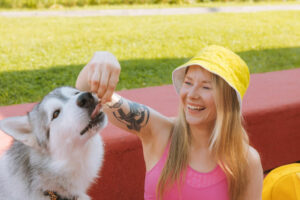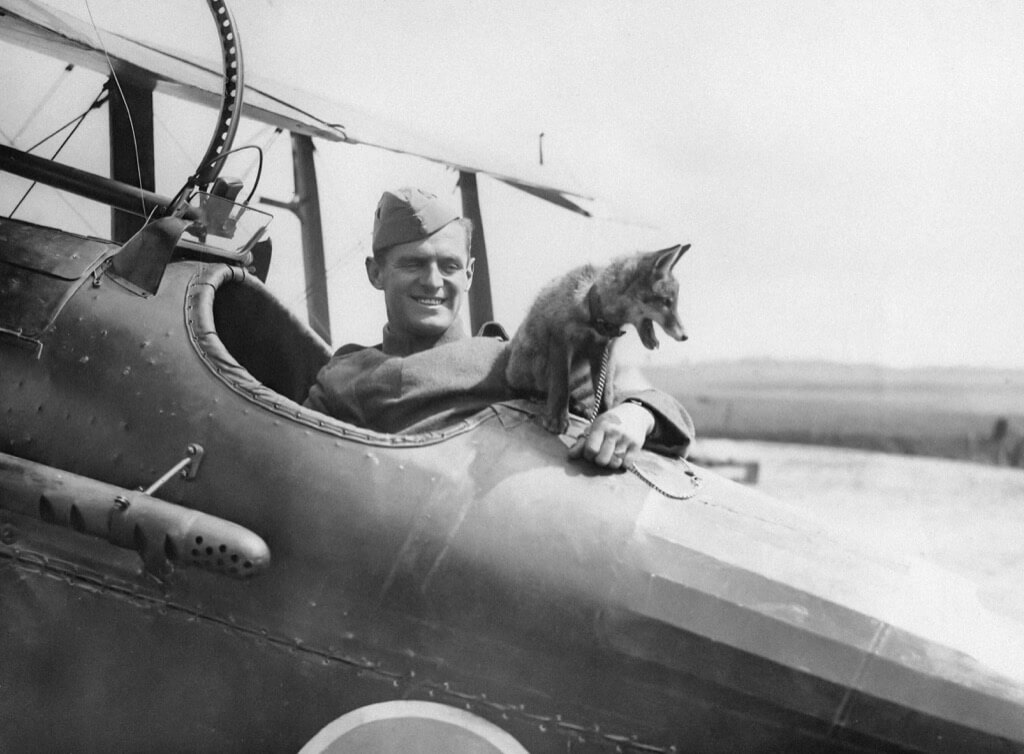Training a guide dog begins from birth. Organizations specializing in guide and service dog training often maintain their own breeding programs or collaborate with trusted breeders. This ensures that the dogs have the ideal temperament and characteristics for their vital roles. Breeds like Retrievers and Border Collies are often preferred for their intelligence, loyalty, and situational awareness, although the suitability of a dog also depends heavily on the individual needs of the person it will assist.
Pairing a guide dog with an owner is a nuanced process that considers various factors, including temperament, size, and walking speed. For example, a guide dog with a brisk walking pace might be paired with a taller person, while a more placid dog could be matched with an elderly owner. The goal is to ensure a strong, supportive bond between the dog and its owner, enhancing the effectiveness of the partnership.
In the first 6-8 weeks, a guide dog puppy stays with its mother and littermates, learning vital social skills and receiving affection. This period, although devoid of formal training, is critical for developing a well-rounded, confident dog. Around two months old, the puppy is placed with a puppy raiser for about a year. During this time, the puppy is socialized extensively and introduced to various environments, while also learning basic obedience.
After the initial socialization phase, the guide dog enters formal training, which focuses on specific skills needed for guiding. This includes learning to navigate obstacles, respond to commands, and ignore distractions. The training is rigorous and requires the dog to develop a high level of discipline and focus, essential for its future role.
As the training progresses, the dog is gradually introduced to more complex scenarios and environments it will encounter in its role. This includes navigating busy streets, public transport, and various public spaces. The final stage involves a matching process with a visually impaired or blind person, ensuring compatibility and readiness for a life of service.
The Impact of Guide Dogs on Their Owners
Guide dogs significantly impact the lives of their owners, offering not just physical guidance but also companionship and increased independence. The bond between a guide dog and its owner is profound, built on trust and mutual respect. These dogs not only assist with navigation but also provide emotional support, enhancing their owners’ overall quality of life.
Guide Dogs for the Blind employs positive reinforcement techniques, utilizing high-value rewards such as food and praise. This method not only aids in skill acquisition but also boosts the dogs’ motivation and confidence. Physical and verbal affection are integral to creating a guide dog that is both skilled and content in its work. This approach ensures that the guide dogs associate their tasks with positive experiences, making them more eager and efficient in their roles.
The training of guide dogs involves a combination of repetition and praise. Techniques like clicker training are employed to enhance the dogs’ ability to target specific objects accurately. About halfway through their training, instructors conduct blindfolded walks with the dogs to assess their capabilities and readiness for guiding. This phase is crucial in ensuring that the dogs can reliably perform their tasks.
Formal training for a guide dog typically lasts between three to five months, although the duration can vary based on the dog’s progress and specific training requirements. Guide Dogs for the Blind emphasizes the importance of thorough training, which might extend the time a dog spends in their program. This period is essential for ensuring that the dog is fully prepared for its responsibilities.
Guide dogs are taught standard obedience commands like “Sit,” “Down,” “Stand,” “Heel,” and “Come.” These commands are crucial for maintaining discipline and ensuring safety in various environments. The training also involves exercises for different commands to ensure the dog responds reliably in all situations, especially when guiding a visually impaired person.
Breed Suitability for Guide Dogs
While theoretically, any dog can be trained as a guide dog, certain breeds are preferred due to their size, temperament, and work ethic. Breeds like Golden Retrievers, Labradors, Standard Poodles, and Border Collies are commonly chosen for their suitability. The selection process is meticulous, ensuring that the chosen breeds can effectively perform the guiding tasks.
The Well-being of Guide Dogs
It is crucial to ensure that guide dogs enjoy their work. Dogs unsuited to the responsibilities of guiding are identified early and removed from the program. This ensures that the dogs who do become guide dogs find satisfaction and joy in their work, rather than stress or discomfort. This aspect of training and selection is vital for the well-being of the guide dogs and the effectiveness of their service.
The living arrangements for guide dogs are designed to provide comfort and rest. Typically, they sleep in their owner’s home, ensuring they are well-rested and ready for their guiding duties. These arrangements also foster a strong bond between the dog and its owner, crucial for a successful guiding partnership.
While many guide dogs are trained from puppyhood, it is also possible to train older dogs as guide dogs. This flexibility allows for a range of dogs to be considered for training, including those rescued at an older age. The key is to ensure that regardless of age, the dogs can adapt to and excel in the guiding role.
Embracing Advanced Training Techniques for Guide Dogs
As we look towards the future, the training of guide dogs is likely to see significant advancements. With continuous research in canine psychology and behavior, you can expect more refined and effective training methods. These advancements may include enhanced positive reinforcement techniques, further tailoring the training to each dog’s individual personality and learning style. For you as a potential guide dog owner, this means being paired with a dog that is even more attuned to your needs and lifestyle.
The future of guide dog training may also integrate technology to a greater extent. From virtual reality simulations to advanced tracking and monitoring systems, these tools could provide deeper insights into a dog’s progress and suitability for guiding work. For you, this could translate into a more streamlined and transparent process when being matched with a guide dog, ensuring a perfect fit for your specific requirements.
Looking ahead, there might be a shift towards including a broader range of dog breeds in guide dog programs. This expansion would not only alleviate the shortage of guide dogs but also provide more options for individuals with specific preferences or needs. Whether you have allergies, space constraints, or particular lifestyle considerations, the future could hold more breed options that cater to your unique situation.
In the future, there’s likely to be an even greater emphasis on the well-being of guide dogs. This focus on mental and physical health ensures that the dogs enjoy their work and lead fulfilling lives. For you, this means being partnered with a guide dog that is not only skilled and reliable but also happy and healthy, leading to a stronger and more effective partnership.
The horizon of assistance dog training is bright with possibilities, poised to offer enriched experiences to both the dogs and their owners. Future training practices, grounded in scientific research and compassionate care, will prioritize the well-being and happiness of these remarkable animals. For you, this means being paired with a guide dog that is not just a helper but a joyful companion, fully equipped to support you in navigating the challenges of visual impairment. This progressive approach will undoubtedly transform the lives of many, fostering independence and confidence through the unwavering support of a four-legged friend.

Dive deep into the world of holistic canine understanding with our online masterclass. This isn’t…

Unlock the mysteries behind your furry friend’s journey with our exclusive course. Dive deep into…

